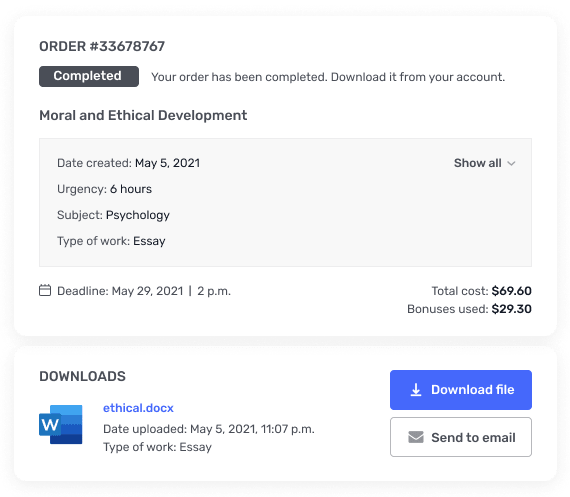Conceptions of Deviant Behavior – The Old and New, Jack P. Gibbs
Answer two questions:Conceptions, Entrepreneurs, and Power1. Conceptions of Deviant Behavior: The Old and New, Jack P. Gibbs2. Using an Integrated Typology of Deviance to Analyze Ten Common Norms of the U.S. MiddleClass, Alex Heckert, Druann Maria Heckert3. Moral Entrepreneurs: The Creation and Enforcement of Deviant Categories, Howard S. BeckerThe Production of Deviant Categories and Actors4. Blowing Smoke: Status Politics and the Shasta County Smoking Ban, Justin L. Tuggle, MalcolmD. Holmes5. The Production of Deviance in Capitalist Society, Steven Spitzer6. The Discovery of Hyperkinesis: Notes on the Medicalization of Deviant Behavior, Peter ConradPoints Possible: 20Deliverable Length: 2-3 pagesDue: Friday, January 29, 11:55 pmAnswer two questions:1. The Heckert article proposes a typology of deviance with four categories. Define each of thefour categories, making sure to provide specific examples of deviant behavior for each. Also,which of the four types do you think covers most deviant behavior in society. If there is nodominant type among the four, why do you think this is so?2. Howard S. Becker describes moral entrepreneurs as crusading reformers, of which there aretwo groups: rule creators and rule enforcers; the goal of these entrepreneurs is to influence theprocess by which behavior is defined and reacted to as deviant. Summarize the importance ofcreators and enforcers for deviance-labeling. Assess the impact of both groups in society’schanging reaction to public tobacco use in the last twenty years. Include a brief analysis of moralentrepreneur interview findings from the Tuggle and Holmes smoking ban article.3. According to Steven Spitzer, in capitalist society groups of deviants are “produced” as areflection of the working classes disturbance or hindrance of the capitalist economic function(that is, to make more and larger profits for the owning classes). List and briefly discuss the fivesituations because of which “populations become generally eligible for management as deviant”in Spitzer’s view.4. Peter Conrad writes of the “discovery” of hyperkinesis among children. Explain theimportance of medical diagnosis for the labeling of such as deviant and therefore in need ofsocial control.




